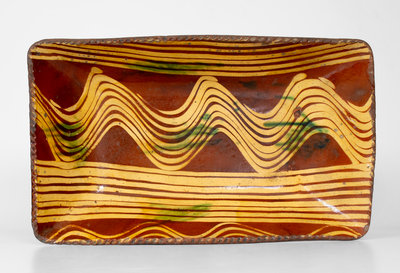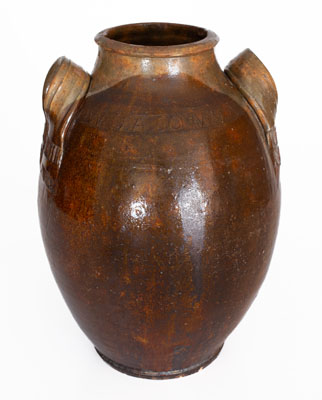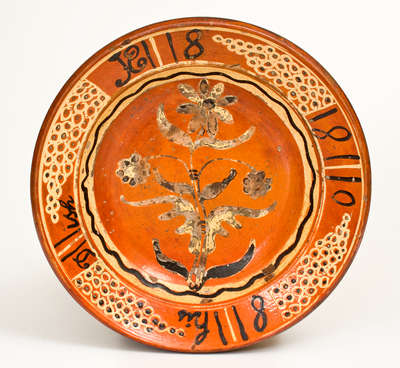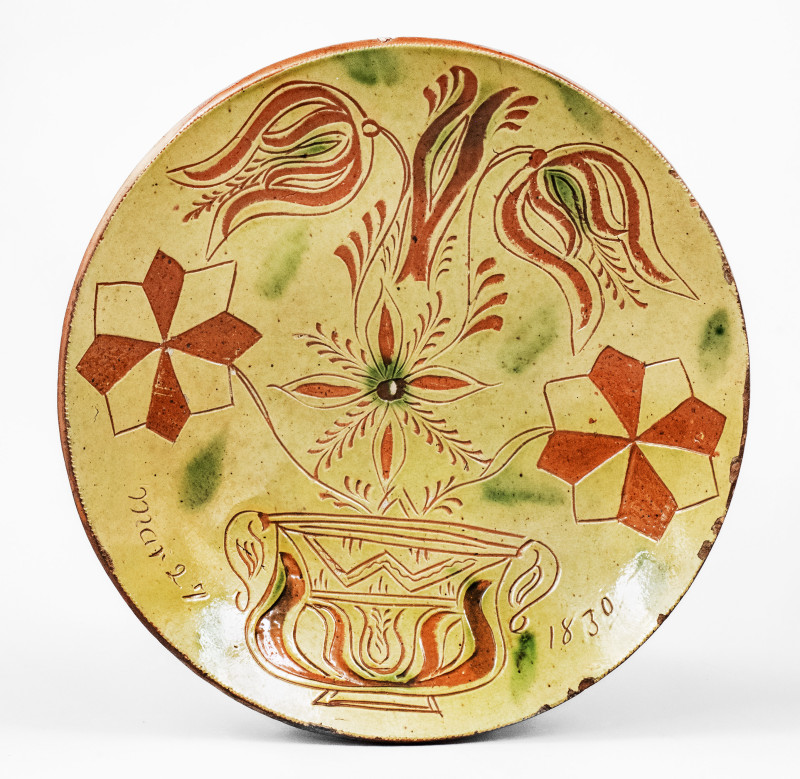Extremely Rare Slip-Decorated Redware Ale Mug, Stamped "S. H. WAY., EOLA, OGN.," Solomon Hiatt Way, Eloa, Polk County, Oregon, origin, circa 1863-1870, ovoid mug with footed base and tall collar, the surface dipped in a reddish-brown manganese slip, decorated with marbled daubs of yellow slip to the body, collar, and handle, the midsection featuring a wide band of yellow slip with straight and wavy combed treatment. Yellow slip coating to interior and rim. Interior and exterior surface covered in a clear lead glaze. The first example of redware made on the West Coast of the United States that we have ever offered, this beautifully-decorated work showcases Way's proficiency in slip application. As Blaine A. Schmeer writes in his 2010 Cold Kilns: Oregon Potters in the 19th Century, "Seldom does a man excel in his craft to the point where today one gets goose bumps just handling his beautiful pottery pieces. Solomon Way was such a man. His artisanship sets him apart from all the Oregon potters of the 19th century. While other potters were content to create a ... utilitarian jar or jug ..., Way astonishes us with his use of glaze mixes and application to create works of art." (Schmeer, p. 50.) It also stands as a document of the transmission of American utilitarian pottery styles across vast distances, in this case from one coast to the other. Born in the early 19th century in Guilford County, North Carolina, but having moved in infancy with his family to the Midwest, it is likely that Way (1809-1885) was heavily influenced by the Quaker potting tradition of Guilford County. A Quaker himself, this tradition was the same that gave birth to such highly regarded potters as Henry and Silas Watkins--redware makers whose work also featured distinctive deep red hues and marked use of sine wave-shaped tooling. The fact that these skills were brought over the infamous Oregon Trail only augments the great story behind this exceedingly rare object. A family history of Way, taken with period documents, demonstrates that he and his family made the arduous journey over that trail sometime in the 1850's, having spent decades in Ohio, Indiana and Iowa. He appears in the 1860 federal census in Douglas County, Oregon; Schmeer notes that Way moved to Eloa by 1863, and a surviving reference shows him selling his pottery shop there in March of 1870. A 1 7/8" wide U-shaped crack on underside, with one end extending approximately 3 1/4" onto base area and another forming an approximately extending onto underside. Wear to rim. H 5 3/4".


















